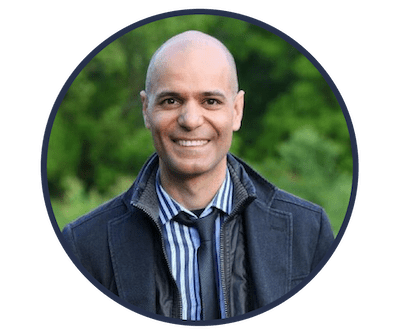What Is Mindfulness and Meditation in Healthcare Practice and Why Does It Matter
Introduction to Mindfulness and Meditation
In this blog, Bahram Jam and Rachel Donen provide an overview of mindfulness and meditation, its relation to persistent pain and the importance of mindfulness in healthcare practice and daily life.
Practicing mindfulness can be difficult when you don't know where to start or what mindfulness entails. In simple words, mindfulness is something you are at that moment whereas meditation is a form of practice to become mindful.
Mindfulness is "paying attention in a particular way: on purpose,
in the present moment, and non-judgmentally."
Relationship Between Mindfulness and Persistent Pain
Various studies have demonstrated that people can experience a significant reduction in pain when using mindfulness and meditation and it can increase the pain threshold. Perhaps more importantly, it can reduce the suffering and unpleasantness that often accompanies pain.
A study in 2015, took 75 healthy and pain-free people and divided them into four groups. They were given a painful stimulus with a 120-degree thermal probe and their brains were scanned using an MRI.
The first was a placebo cream group - participants were told that the cream would reduce pain over time. They were instructed to rub the cream on the back of their leg and tested it against the painfully hot thermal probe. However, the researchers reduced the heat each time they applied the thermal probe and the participants thought it was cream.
The second group was given a kind of sham mindfulness meditation. They were told to breathe deeply for 20 minutes but were given no other instructions.
The third group (control group) listened to 20 minutes of a very boring audiobook.
The fourth group sat in a straight pose for 20 minutes, closed their eyes and listened to specific instructions on where to concentrate and how to let thoughts and emotions go without judgment.
At the end of the study, each participant had a second MRI.
Participants in all groups were found to have greater pain reductions than the control group. Moreover, the mindfulness group had a significant reduction in their pain and they reported a 44% reduction in their level of the unpleasantness of the experience.
Watch this Video by Bahram Jam and Rachel Donen to Learn More About Mindfulness:
Click Here to Keep Learning
With Bahram Jam and Rachel Donen
Importance of Mindfulness in Healthcare Practice
Opioid medication can help decrease pain levels; however, the level of unpleasantness or suffering doesn't decrease at all with opioids.
With mindfulness, a patients’ suffering becomes less even though their pain level may not decrease. As for the risks associated with the use of prescription opioids, it has been shown that if patients take opioids for more than 90 days, the likelihood of continuing to take them regularly and developing a substance abuse disorder rises. Sometimes we might not know how to change or cure patients’ conditions, but we can certainly reduce peoples suffering by practicing mindfulness.
Mindfulness in Your Daily Life
To practice mindfulness, you don't have to go anywhere in particular (like the mountain tops). The best way to practice mindfulness is simply breathing. We could experience the benefits of mindfulness by simply focusing on the breath without force or judgment for a few minutes. Usually, we tend to focus away from the breath so the challenge is to bring attention and thought back slowly to breathing without being judgemental about “mind-wandering”.
Another way to practice mindfulness in your daily life is by mindful showering. Most people while showering thinks about so many things like the project due next week, their kids, their boss, etc. Mindful showering means to be present and experience the shower by simply feeling the water as it sprays on the head or sensing soap between your toes.
Most of the time we do unmindful eating that is rapid eating without attention and present while chewing, tasting and swallowing. Whereas mindful eating means paying attention and appreciating every bite.
Also, try mindful exercise or mindful movement! Mindful movement means to be present and fully aware of the movement of the body and all the sensations associated with the movement.
Topics of Discussion in the Online Course Include:
- What is mindfulness? What is meditation?
- How do you incorporate mindfulness principles into your physiotherapy practice?
- How can we help our patients who have been playing whack-a-mole with their symptoms by trying every kind of intervention out there?
- What does chronic pain have to do with meditation?
- What is the research saying about patient-therapist communication?
- How do you build a strong therapeutic alliance with your patients?
Conclusion
In this blog, we have briefly discussed mindfulness and meditation in health care practice and its importance and we discussed various ways to practice mindfulness in our daily life. In summary, by using mindfulness, we may reduce people's suffering and pain. If you wish to learn more about Mindfulness and Meditation in Healthcare Practice enroll in this online course by Bahram Jam and Rachel Donen today.

MSc, Yoga Instructor

PT, D.SC.PT, M.PHTY, B.SC.PT, FCAMT
Bahram is a physiotherapist and founder of the Advanced Physical Therapy Education Institute (APTEI). He's taught 1000+ continuing education courses to healthcare professionals across Canada & internationally.
He has instructed over one thousand post-graduate orthopaedic and pain science courses and has been a guest presenter at several physiotherapy and medical conferences across Canada and internationally.
His primary clinical approach is to identify relevant functional impairments and determine the best self-management strategy to maximize patient independence.